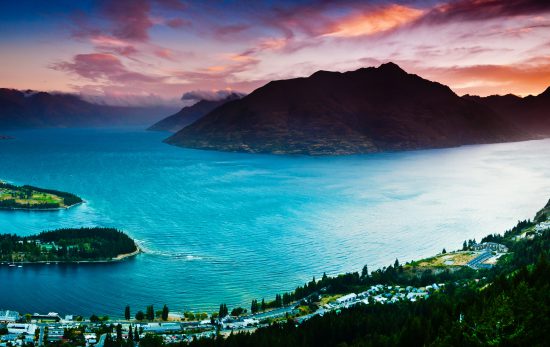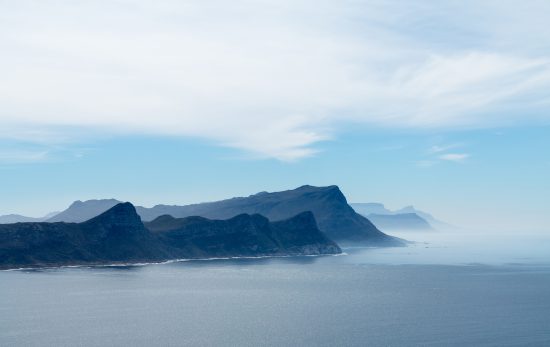Dolphins have always captured our imagination. They’ve been the stars of Greek legends and modern movies. Swimming with them is a dream for most divers.
These highly intelligent and playful animals will leave you with an experience you will remember for the rest of your life. This is why divers travel all over the planet to meet these incredible creatures.
Here are the top 10 places in the world to dive with dolphins.
Check out this 5-star dive center to dolphin dive located in Turkey.
The Best Places to Swim and Dive with Dolphins
1. The Bahamas
The Bahamas sits between Florida, Cuba and the Turks and Caicos in the West Atlantic Ocean. The archipelago is made up of atolls and coral cays with hundreds of different islands around them. The crystal-clear, shallow waters of the Bahamas offer plenty of dolphin encounters, with the mammals being seen near Bimini Grand Bahama, and in lots of secret coves known only to tour operators. Head to Grand Bahama, located just 56 miles east of Palm Beach, Florida, for warm waters and almost guaranteed encounters with several resident pods of dolphins all year round.
When to Go: Year round
Type of Dolphins: Spotted, spinner, striped, and bottlenose
Other Wildlife: Later in the year, chances to encounter bull, tiger, and oceanic whitetip sharks.
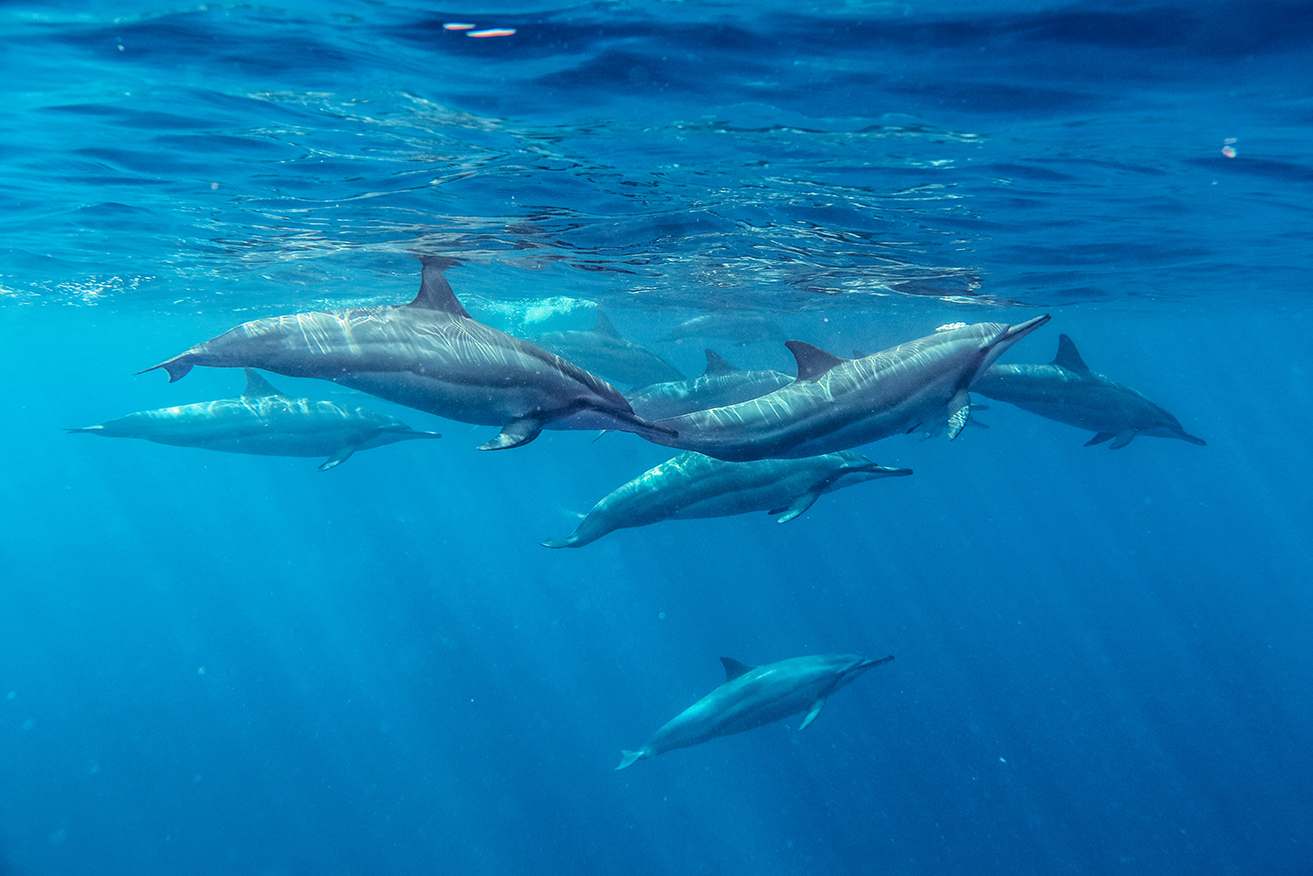
2. The Galapagos Islands
This UNESCO World Heritage Site is at the top of many diver’s bucket lists, and for a good reason. The Galapagos Islands can be found over 600 miles (1000 km) to the west of the coast of Ecuador. The island of Isabella is a short hour and a half flight from the coastal city of Guayaquil but despite this easy access, Galapagos has a real feel of being remote and wild. Most of the very best dive spots on Galapagos such as Darwin and Wolf islands are only accessible by a week-long diving cruise. Alongside whales, sharks and other large marine animals, dolphins are often spotted from the boat and below the surface. Bottlenose and common dolphins are permanent residents with other species migrating through the park. Spinners in particular can be found in large groups at Fernandina Island.
When to Go: Year-round
Type of Dolphins: Bottlenose, common, Risso’s, spinner, and spotted
Other Wildlife: The list is almost endless and includes whales, mantas, marine iguanas, penguins, sea lions, and plenty of sharks
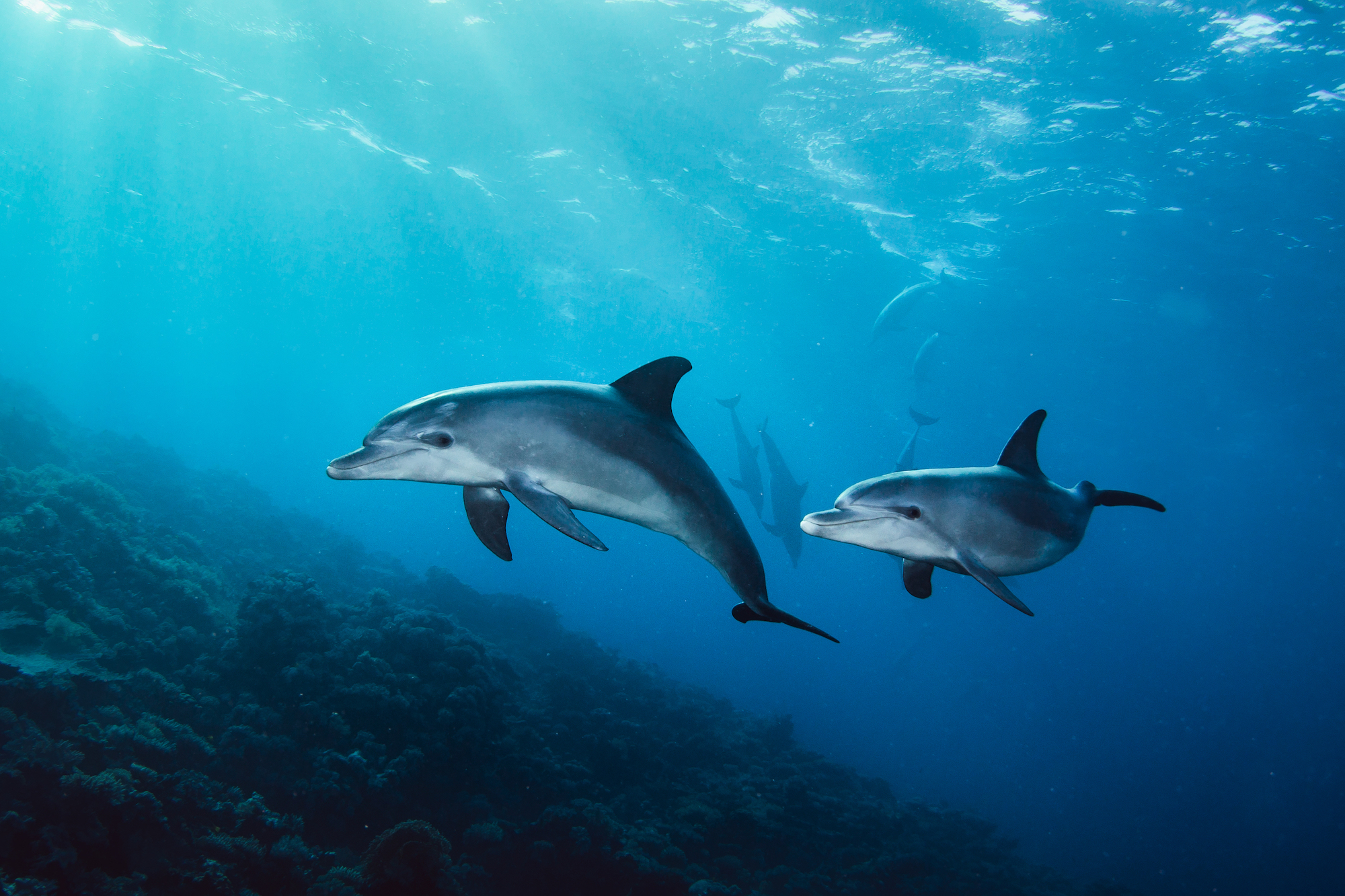
3. Sataya Reef & Samadai Reef, Egypt
The clear visibility of Egypt’s Red Sea with its colorful coral and fish life are enough to satisfy any underwater enthusiast. Egypt and the Red Sea have no shortage of epic dive sites. From the famed SS Thistlegorm to the biodiverse Straits of Tiran, Brothers and Ras Mohammed Marine Reserve. To make the area even better, it’s home to many resident dolphin pods with spinner, bottlenose, common and Risso’s species all making an appearance.
Head to the famous reefs near Marsa Alam in the southern Red Sea. Samadai, known locally as the “Dolphin House”, and Sataya Reef both offer chances to dive and snorkel at the edge of the reef where you wait for the highly inquisitive dolphins to come out of their resting lagoon to check you out.
When to Go: Year round, although the best time is May to July
Type of Dolphins: Mainly Spinner dolphins, with occasional sightings of bottlenose, common and Risso’s dolphins
Other Wildlife: You may also encounter oceanic whitetips nearby at Elphinstone Reef, turtles, and plenty of reef fish
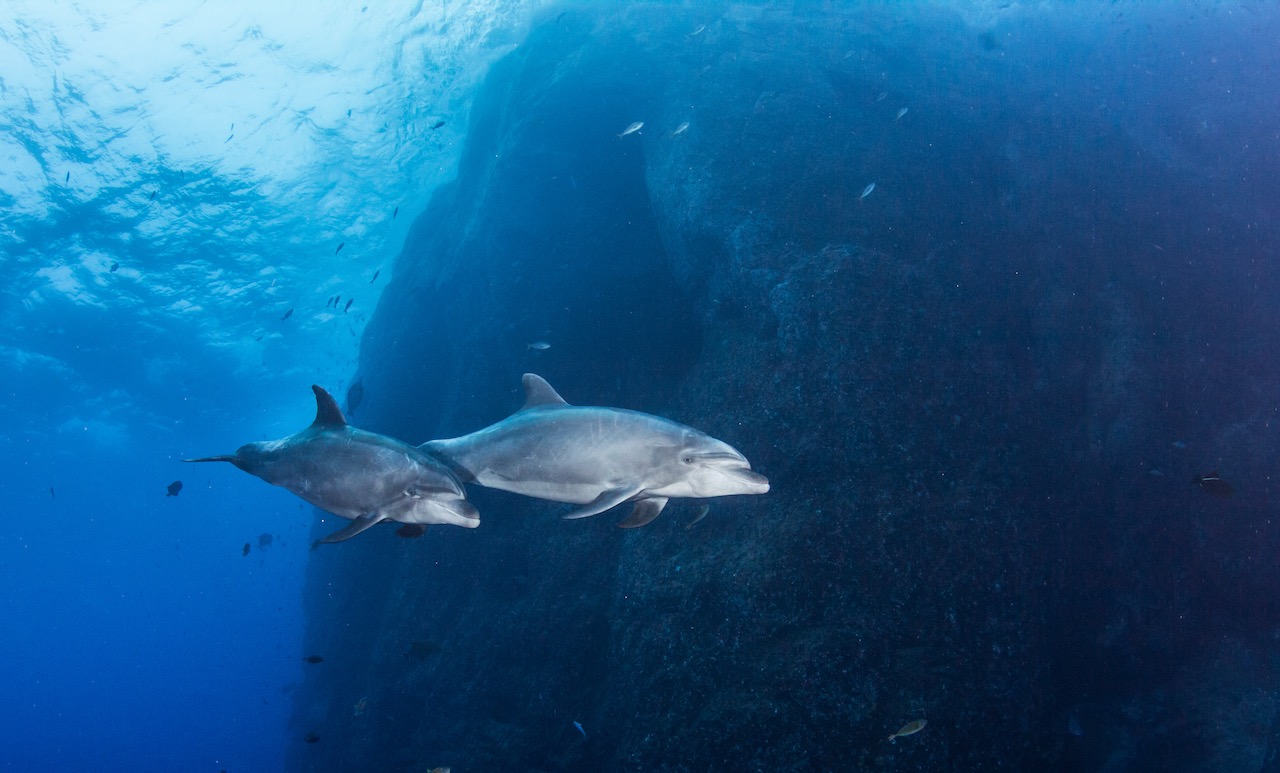
4. Socorro Island
Nicknamed “The Mexican Galapagos” Socorro Island is one of the world’s best dive destinations with some seriously impressive large animals. Here, you can experience the giants of the ocean with manta rays and whale sharks making an appearance. Alongside these impressive marine animals, dolphin encounters are a regular occurrence during the high season.
When to Go: January to March for dolphins, although the season runs from November to May
Type of Dolphins: Bottlenose dolphins
Other Wildlife: Regular encounters with whale sharks, manta rays and up to 10 species of sharks including hammerheads
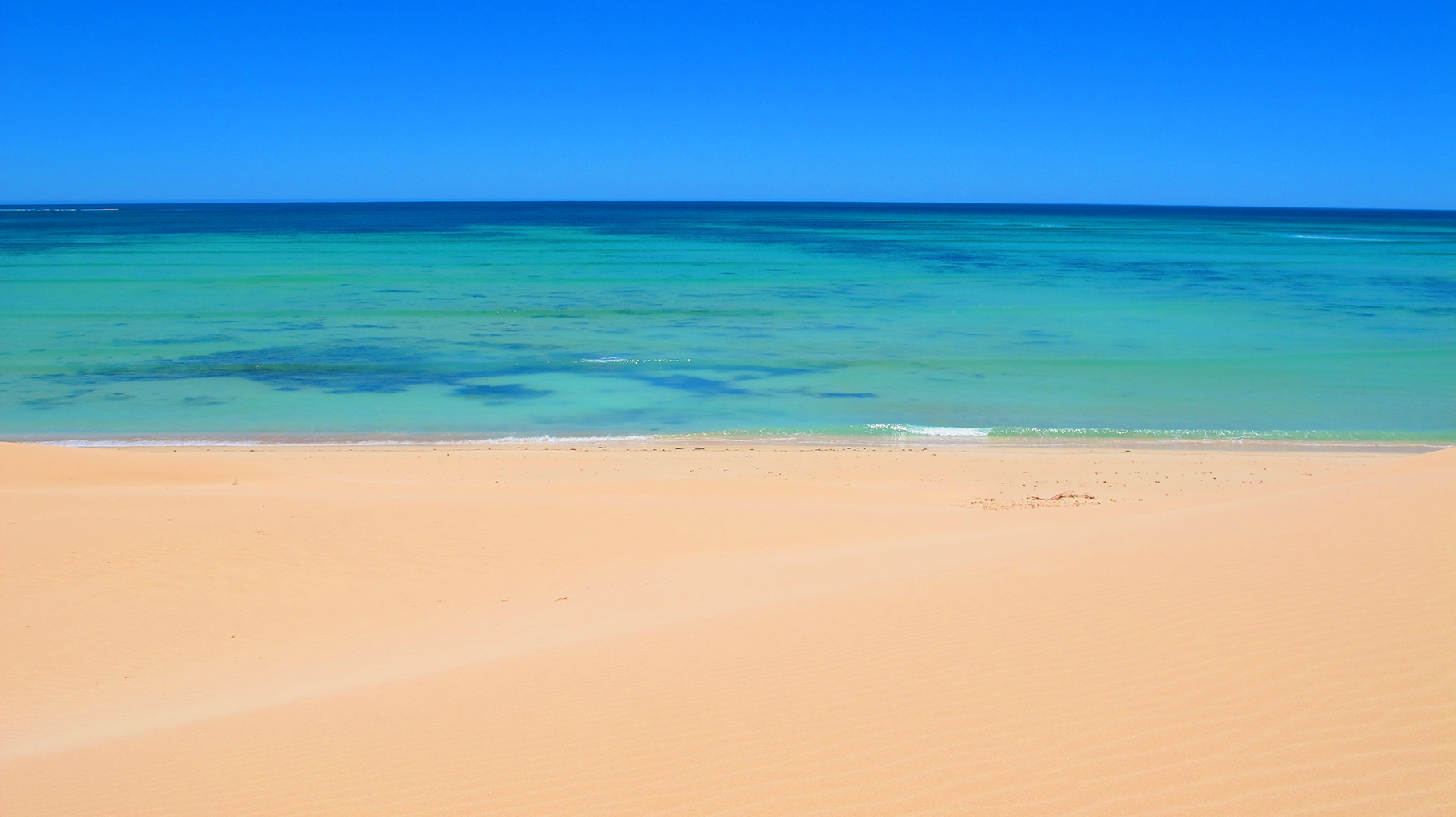
5. Ningaloo Reef, Australia
Ningaloo Reef in Western Australia is world-famous for sightings of whale sharks and manta rays. But this small beautiful reef is fast becoming one of the best places in the world to encounter dolphins.
Common and Indo-Pacific bottlenose dolphins cruise past Rockingham’s bays and Islands while large pods of common dolphins can be found in the Port Stephens-Great Lakes Marine Park. With an idyllic location, awesome marine life, and great weather, it is a little slice of paradise that is well worth visiting.
When to Go: Year round
Type of Dolphins: Common, bottlenose, and Indo-Pacific dolphins
Other Wildlife: You can also encounter whale sharks, whales, and shark
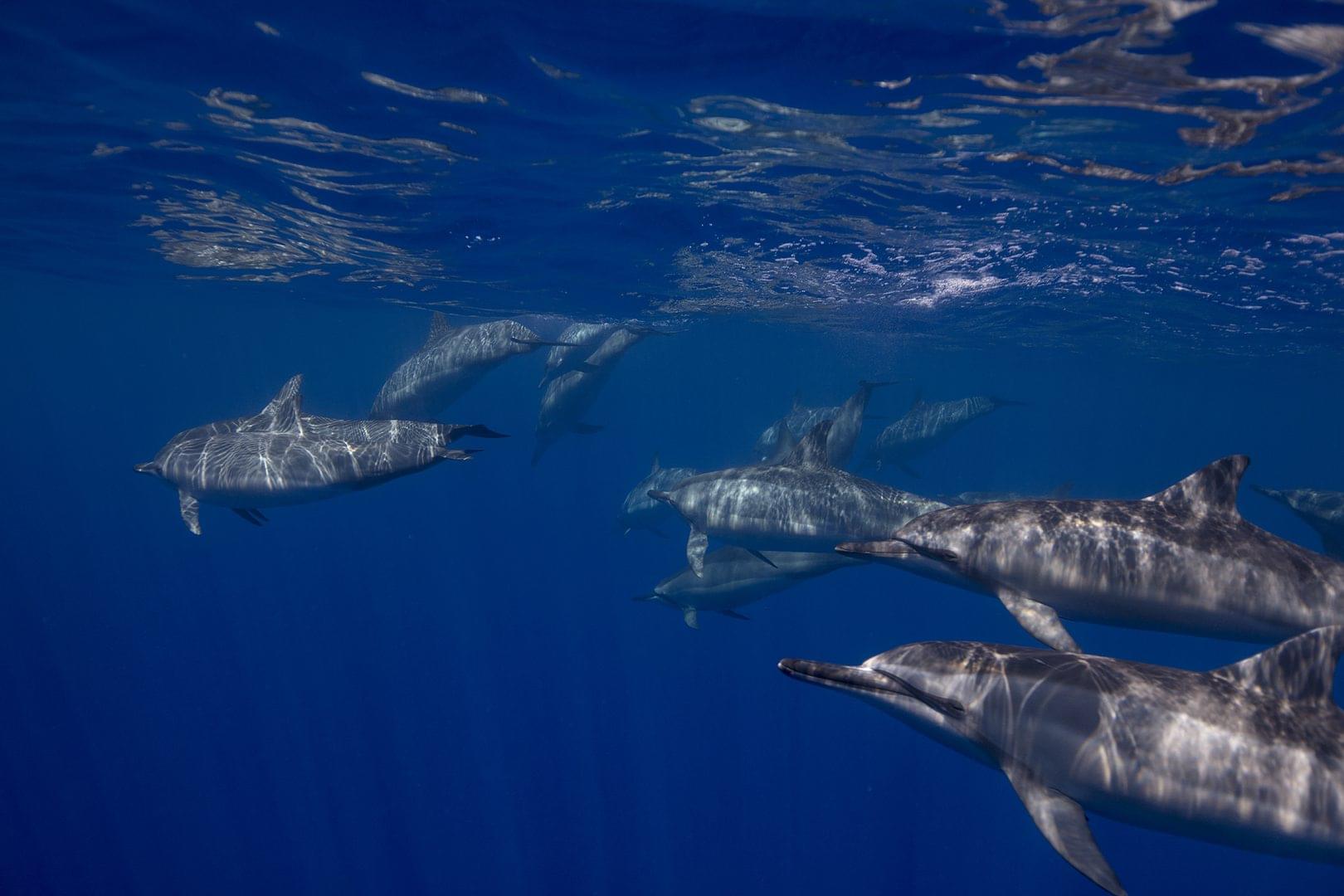
6. The Sardine Run, South Africa
The Sardine Run gained its worldwide reputation with the release of “Blue Planet” as everyone saw the billions of sardines migrating up the Eastern Coast of South Africa. Shoals of up to 15 km long attract hungry seabirds, whales, sharks and, of course, dolphins don’t hesitate to get in on the action.
Divers can be dropped in the middle of the feeding frenzy for a chance to see some of the 18,000 dolphins which chase sardines every year. Divers not only get to see them in impressive numbers but also witness the mammals showing off their intelligence as they cooperate to hunt the huge shoals.
When to Go: May to July for the Sardine Run, though dolphins are present year round
Type of Dolphins: Bottlenose and common dolphins
Other Wildlife: Great encounters with sharks, humpback whales, tunas and jacks
7. Hawaii
Hawaii has resident dolphin pods all year round with spinner, bottlenose and spotted dolphins all making regular appearances.
Hawaii’s volcanic origins and isolated geographical location make for a whirlwind of scuba diving options to explore. From diving with Galapagos sharks, gazing at nesting sea turtles or incredible adventures through the natural lava tubes and rock formations, Hawaii has it all. Head to Oahu and Big Island to spot the Spinner dolphins resting in shallow sandy coves and ask your tour operator if they participate in the government’s dolphin-SMART program to ensure responsible dolphin tourism.
When to Go: Year-round, although the winter months can bring big swells
Type of Dolphins: Spinner, spotted, and bottlenose dolphins
Other Wildlife: sharks, turtles, orcas, pilot whales and manta rays
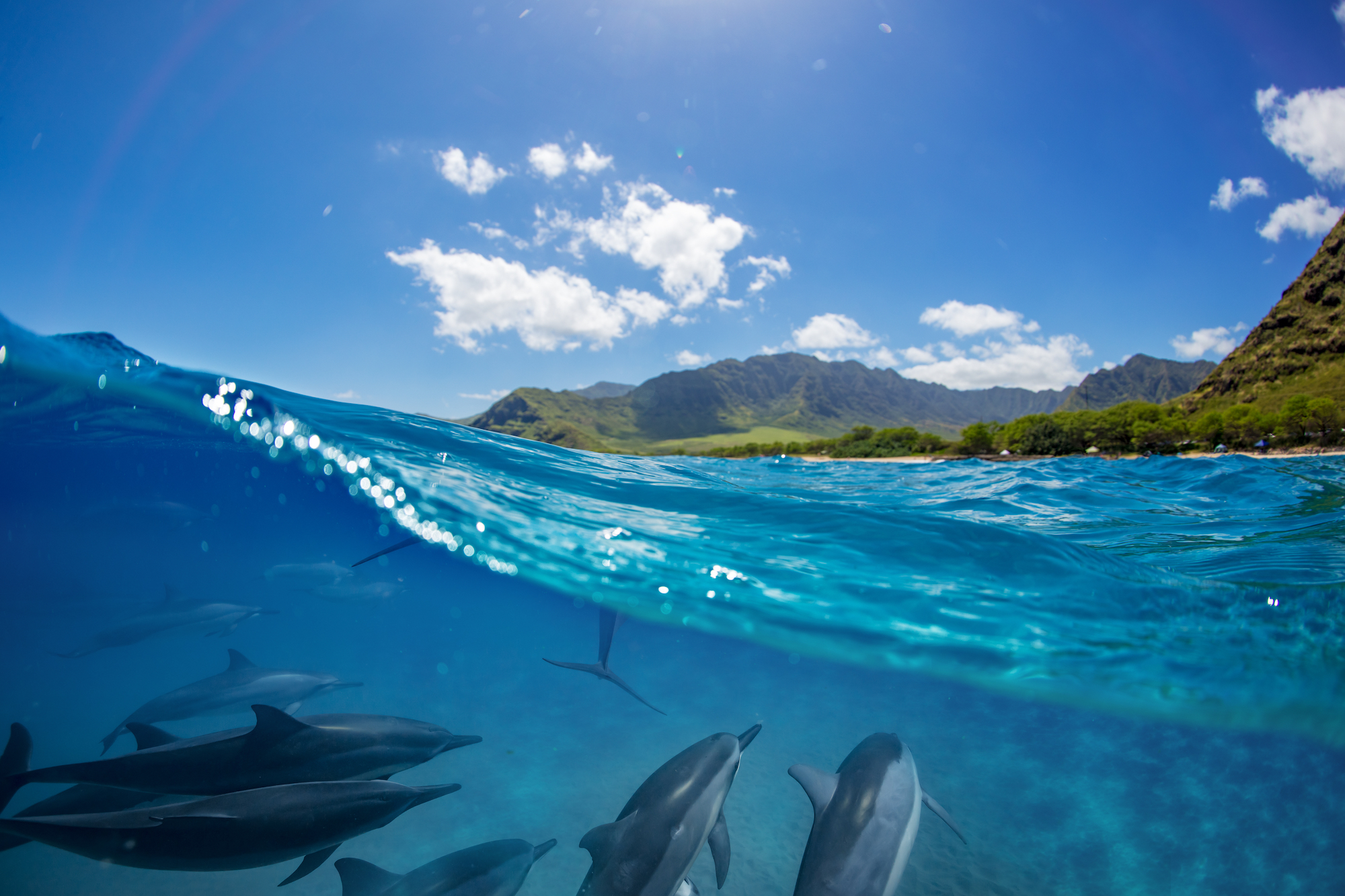
8. Kaikoura, New Zealand
From sub-tropical reefs of the North Island to unique topography and temperate waters of the South Island, it would take a lifetime to discover all the secrets of diving in New Zealand. Kaikoura, located on the east coast of the South Island of New Zealand, is the best place to experience Dusky dolphins. They can be found in pods from 100 to 1,000 strong in the waters around Kaikoura. You can dive or even swim and snorkel with them with several tour operators offering guaranteed encounters with these magnificent creatures.
When to Go: Year round
Type of Dolphins: Dusky dolphins
Other Wildlife: Seabirds and whales
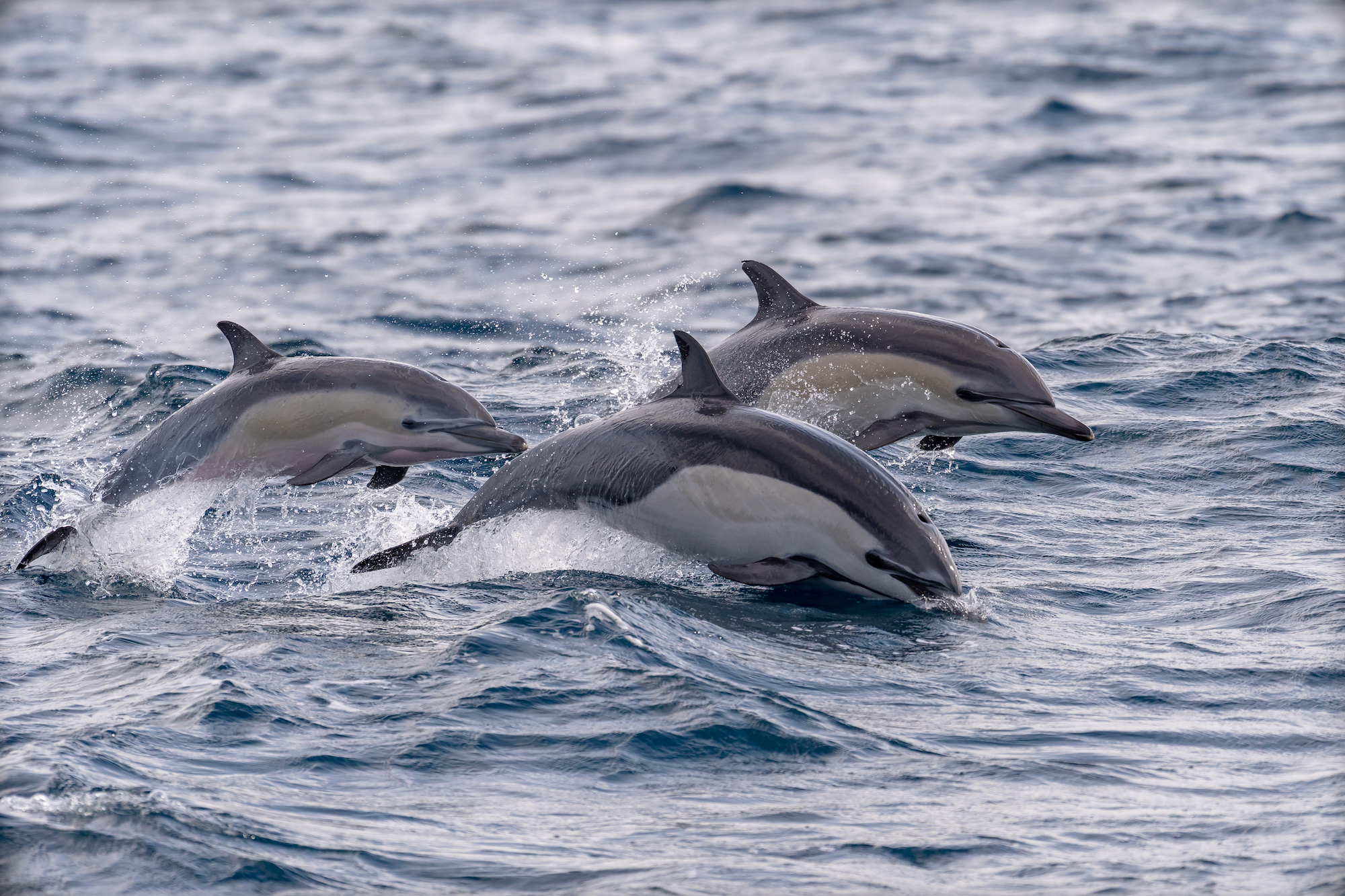
9. Brazil, Fernando De Noronha Island
From famous wrecks and healthy reefs, the variety and quality of diving in Brazil are staggering.
Fernando de Noronha Marine Park, a World Heritage Site, is Brazil’s premier diving destination. With 230 species of fish, 15 species of coral and this is where the world’s biggest pod of spinner dolphins call home; the pod—which possibly numbers in excess of 10,000 animals—can be regularly encountered in the early morning as they return home from a busy night hunting in the open ocean. The island, which is located 200 miles off (320 km) the Brazilian coast, is a UNESCO World Heritage site, and is blessed with some of the most stunning beaches in Brazil.
When to Go: August to November on the north of the island, January to March on the southern shore
Type of Dolphins: Spinner dolphins
Other Wildlife: Great chances to encounter turtles, whitetip reef sharks, and nurse sharks
10. Raja Ampat, Indonesia
For lovers of biodiversity, coral, and macro-life, Raja Ampat is a near-mythical destination, and luckily, it also has plenty of dolphins. The warm waters are home to spinner, spotted, common bottlenose, Indo-Pacific bottlenose, and Risso’s dolphins. You’re likely to come across dolphins on your boat crossings, which gives you plenty of chances to jump in.
When to go: October to April
Type of Dolphins: Spinner, spotted, common bottlenose, Indo-Pacific bottlenose, and Risso’s dolphins
Other Wildlife: pygmy and false killer whales, pilot whales, sharks, manta rays
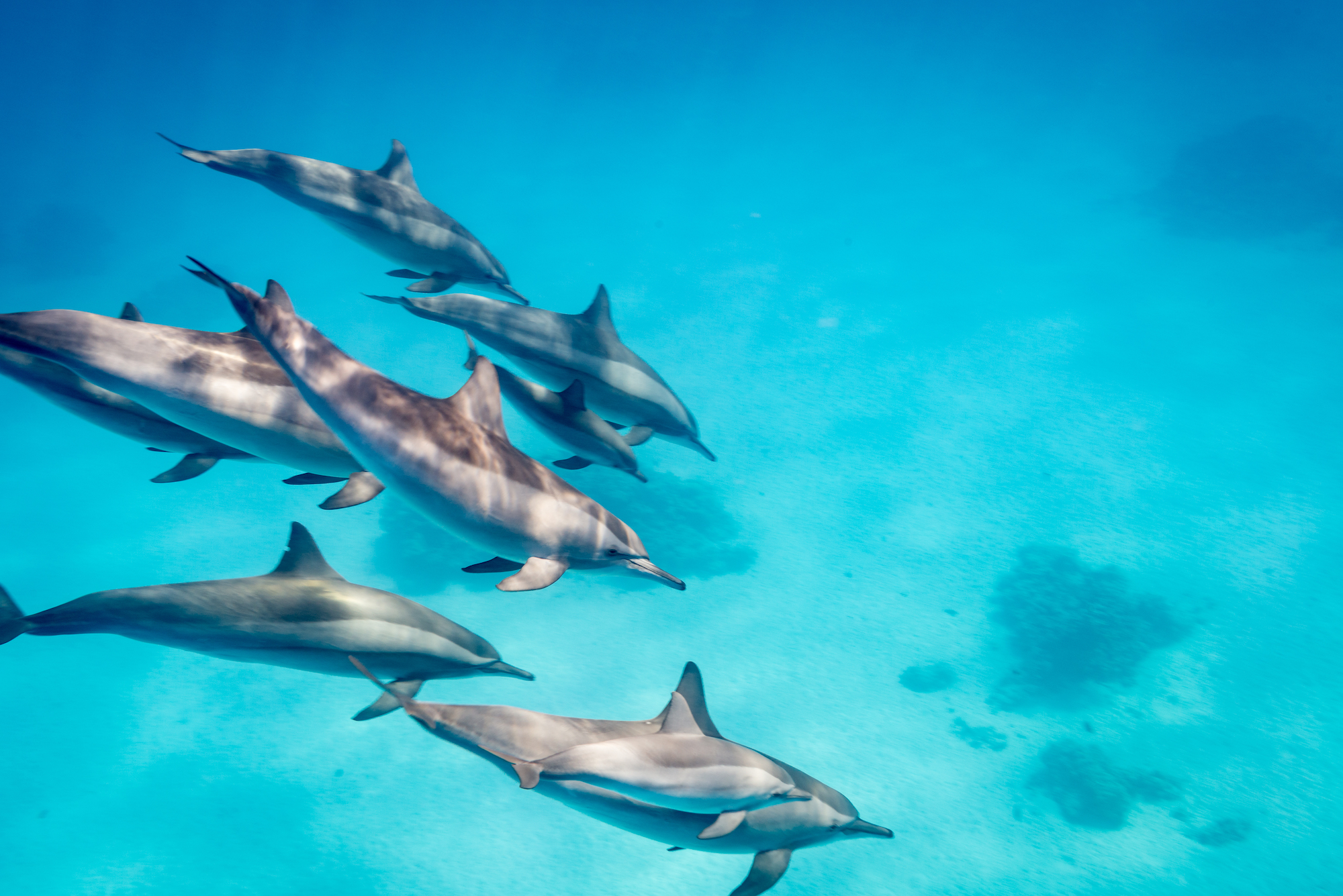
Dolphin Facts
Dolphins are marine mammals, belonging to the cetacean group, and more precisely the odontocetes (or toothed whale) group. They spend their entire lives in the water, but they have to periodically surface to breathe through their blowhole.
Let’s now look at some curiosities about these amazing animals.

Species
There are more than 43 species of living dolphins. The biggest one is the orca (above), which can reach up to 7 meters long (23 ft) and a weight of about 3-4 tons. With a maximum recorded length of 1.4 meters (4.5 ft) and weight of 54 kg, vaquita is the smallest specimen. 38 species of dolphins are oceanic; the other 5 are river dolphins.
Diet and Hunting Strategies
Dolphins are carnivores; they feed mainly on fish (like sardines and fusiliers) and squids. They are social animals and form groups called pods. Being very clever, they have developed various hunting techniques in which each individual has a role.
One of the many hunting strategies is called herding, which consists of surrounding a group of fish, concentrating them at a point by forming a sort of cage, and finally turning into the group of prey to eat them. Watch the video above and take a look at this other spectacular hunting strategy!

Echolocation
To improve their hunting techniques, dolphins have developed an echolocation system, which is a kind of bio-sonar very similar to the one used by bats. They produce sound waves from their head (amplified by an organ called the melon).
They are “frequency-modulated sounds” because dolphins modify the tone of the sound, this is, it can rise and fall over time. The burst-pulsed sounds are recognized by the superposition of sound waves and refer to the “clicks,” produced successively at regular intervals.
Once the sound wave hits an object or a piece of prey, the wave returns, giving them an idea of the distance, shape and size of the object. Echolocation is also used to improve navigation, communication and defense against predators.
Intelligence
Dolphins are considered to be among the most intelligent animals on the planet. They have a well-developed social structure. For example, if one of them is injured or sick, they help the sick individual reach the surface and breathe. Moreover, they are among the animals with the longest memory.
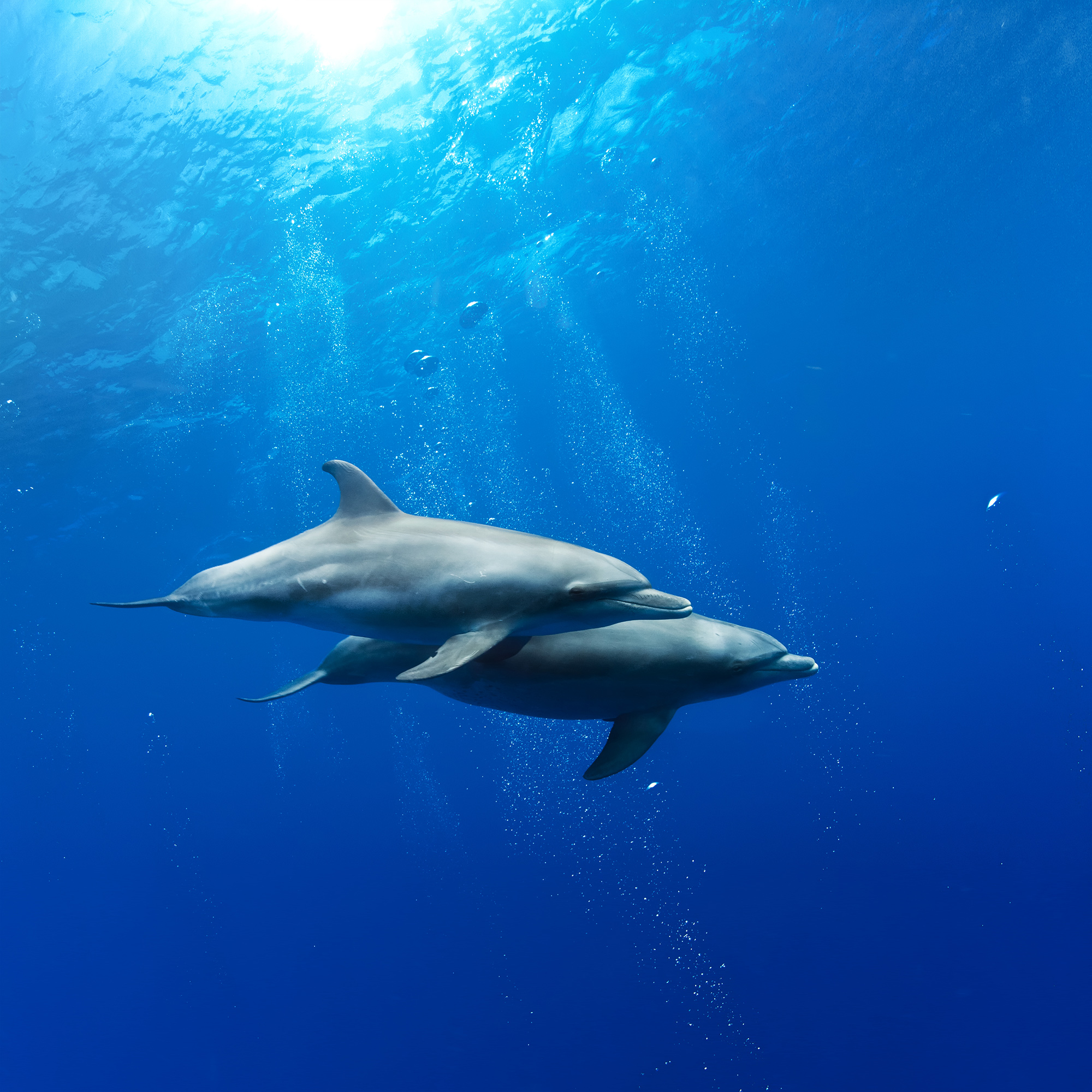
Reproduction
Like all mammals, dolphins reproduce through internal fertilization, which happens at sea. Females give birth to live young and juveniles are able to swim from the moment they are born, but they are totally dependent on nursing their mothers’ milk for nearly two years and (depending on the species) they remain with the mother for up to 8 years.
Behavior
Being very social creatures, it is possible to spot dolphins in pods made by very few dolphins to hundreds of individuals.
Dolphins in Mythology
Dolphins appear several times in Greek mythology. For example, they were sacred to the Gods Apollo and Aphrodite, and they were messengers of the God of the Sea, Poseidon.
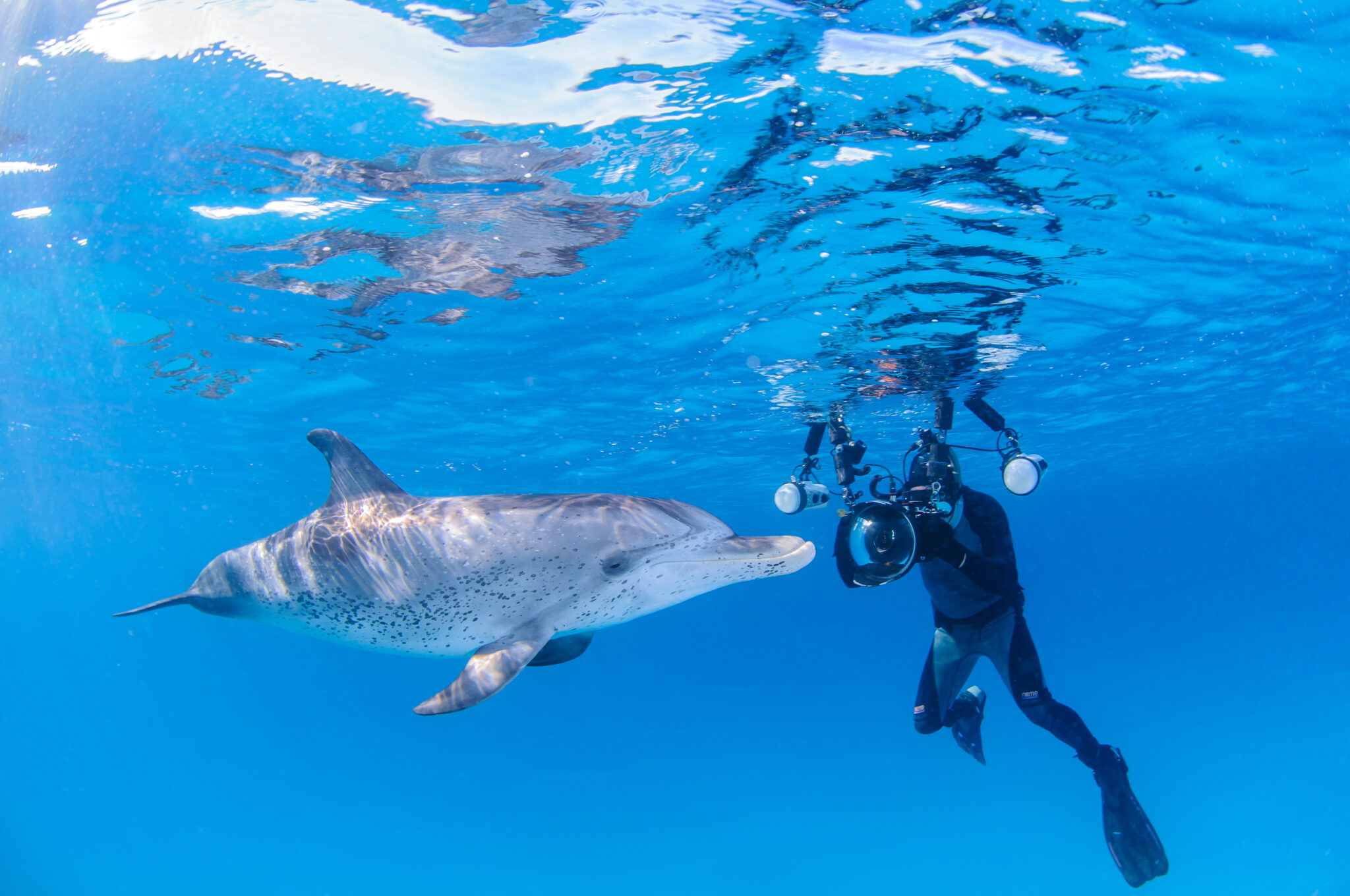
How to Interact with Dolphins
Bring respect to these animals and don’t forget that they are wild animals in their natural habitat. Interactions should always be ‘passive observation’ experiences. Try not to do anything that affects the dolphins from going about their regular behavior. For further read these ‘Do’s and Don’ts of Marine Life Interactions’.
How to ID a Dolphin
First of all, the species of a dolphin can be distinguished by the morphology of the body and the place where you see them (obviously if you have a good ID book under your hand). Researchers establish differences from one individual to another through a photo of the dorsal fin, which is usually unique in shape and scars from individual to individual.
It is also possible to rely on the fluke (rarer to see) and photos of the whole body when spotted underwater. The aim of identification is to monitor population, migration and social structure.
Threats to the Dolphin Population
The world’s dolphin population is in decline. The main dangers are similar to those threatening whales, turtles and sharks. Fishing nets prevent dolphins from surfacing and breathing. Global warming affects their natural prey, which is decreasing in number and changing their migratory routes.
Dolphins are also eaten by humans, despite their meat containing toxic metals. Furthermore, the natural habitat of dolphins is compromised by construction and pollution.
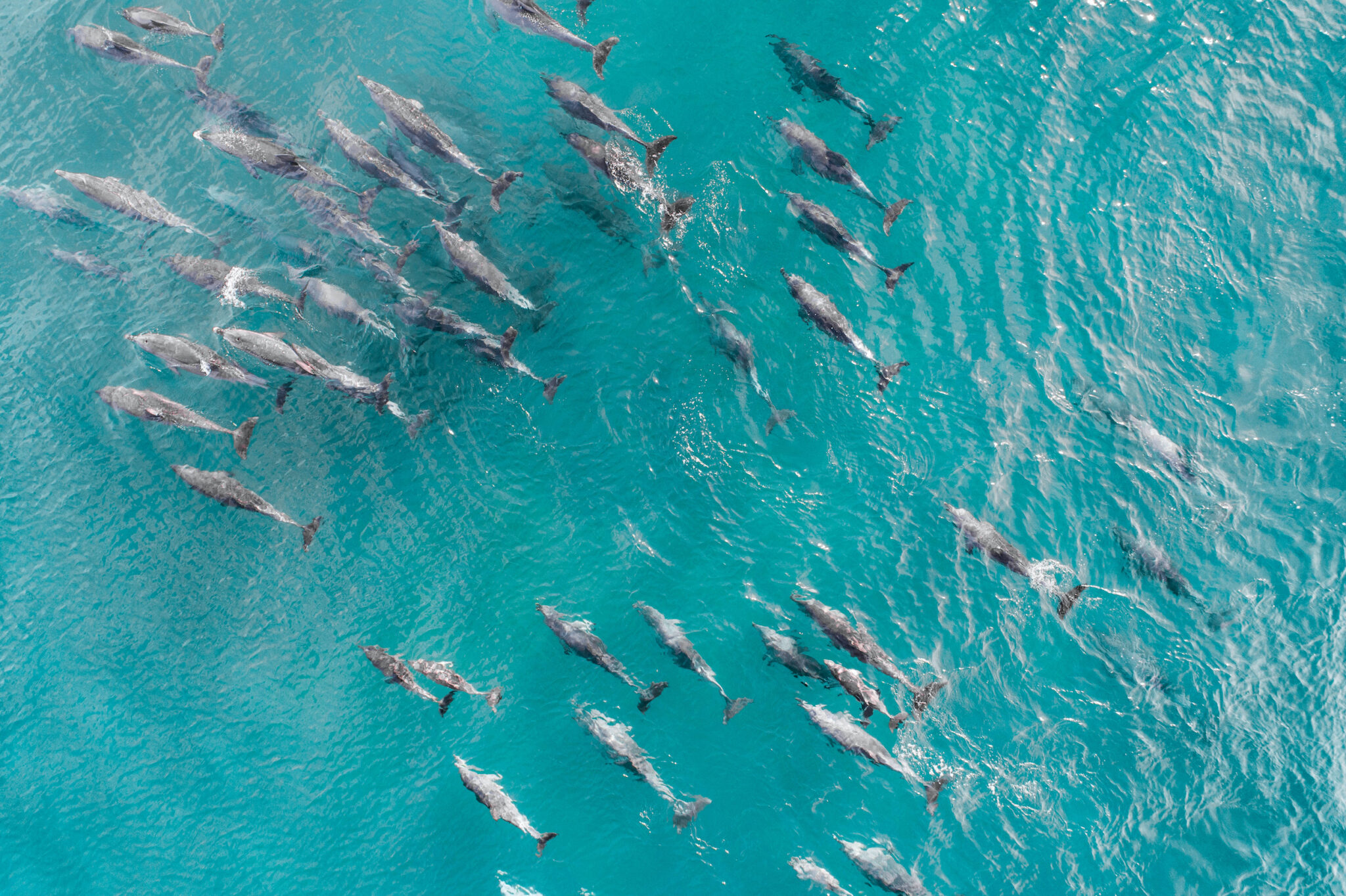
Q&A about Dolphins
How do dolphins communicate?
They emit whistles. It has been discovered that every single dolphin produces a unique whistle, so this can be used to identify each animal. It’s also confirmed they know each other even after 20 years!
How long do dolphins live?
Their lifespan is about 30 years. Bottlenose dolphins can live up to 40 years, and the longest living dolphin is the killer whale (orca), which can live up to 80 years.
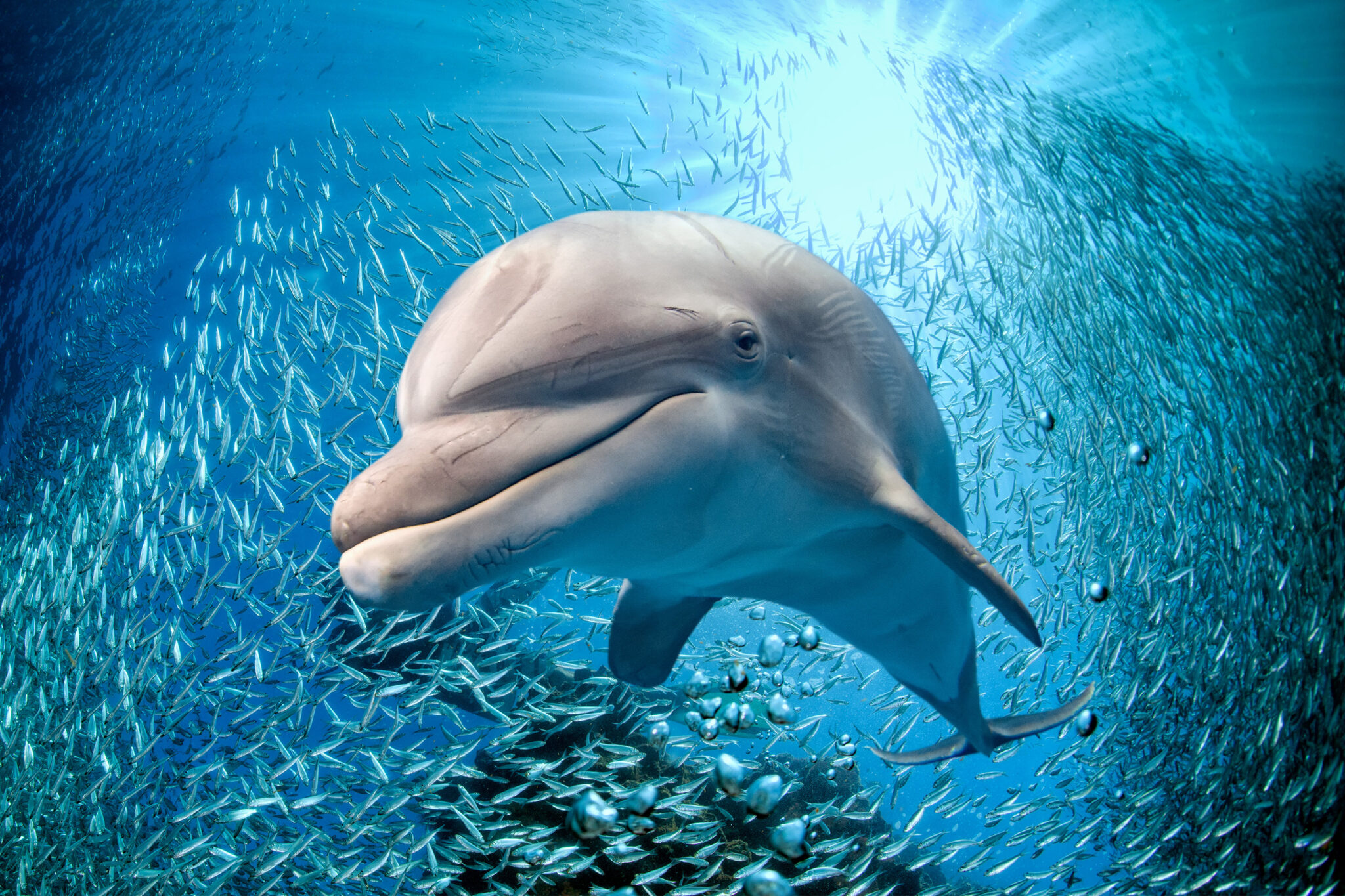
How do dolphins suckle?
Think about how complicated it is to breastfeed underwater. In the absence of lips, milk (similar to yogurt) is literally shot into the mouth of the baby through the mammary gland.
How many dolphins are killed each year?
More than 20,000 dolphins are killed every year.
Are dolphins friendly or not?
Most of them are friendly, but being wild animals they can be aggressive (albeit rarely) and even attack humans, especially when they think they are in danger or are particularly stressed. They are, after all, top predators.
How do dolphins sleep?
The way dolphins sleep is very different from ours. Half of the dolphin’s brain sleeps, so they only have a conscious sleep. The other half of the dolphin’s brain is in charge of deciding when to breathe and observing the environment during sleep.

What Can You Do to Help
- Help protect precious marine life, including dolphins, by supporting PADI AWARE and make every dive a cleanup dive.
- Take pictures of any dolphins you see and send them to your nearest dolphin data collection organization, including the time of the sighting, day, date, and any other information.
- If you find dolphins in captivity, report them to your local authorities and ask if they are licensed.
- Accept guidance from experienced animal welfare experts.
- Be a marine ambassador and promote marine life and the underwater world on your social media!
